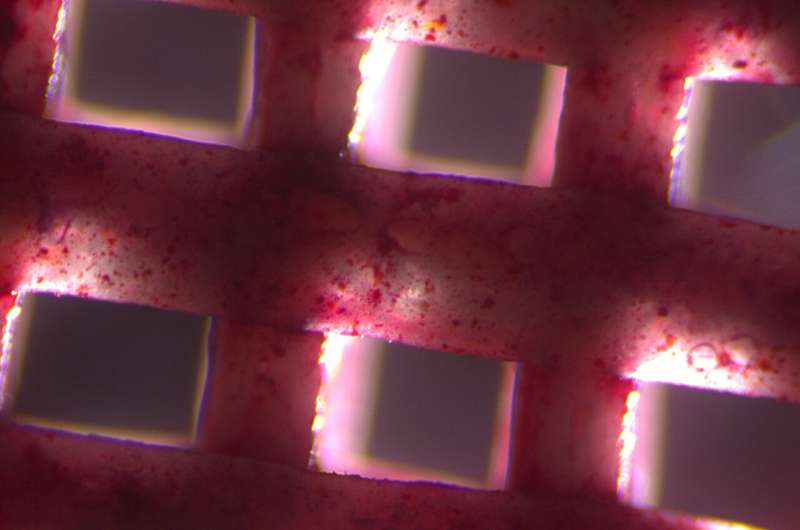Bone is a highly vascularized tissue, and the link between angiogenesis -blood vessel formation- and bone healing has long been discussed by the scientific community, with several studies describing the impairment of bone healing because of lack of or diminished angiogenesis. Traditional approaches like grafting often result in complications due to an inadequate vascular supply to implants, leading to poor integration and necrotic tissue.
To tackle this problem, researchers from IBEC led by Oscar Castaño, senior researcher at the Biomaterials for Regenerative Therapies group, developed a novel approach, recently published in Biomaterials Advances. They applied 3D bioprinting techniques to develop polylactic acid and calcium phosphate-based glass scaffolds that support angiogenesis and vessel maturation.
Bone comprises both a non-mineralized organic part (mainly collagen) and a mineralized inorganic part (mainly hydroxyapatite). In this structure, 3D porosity is needed to assure nutrient and oxygen transport, as well as to allow vascularization, cell infiltration, and waste removal.

